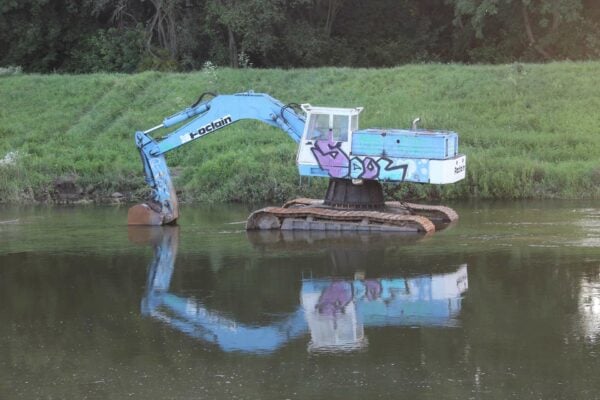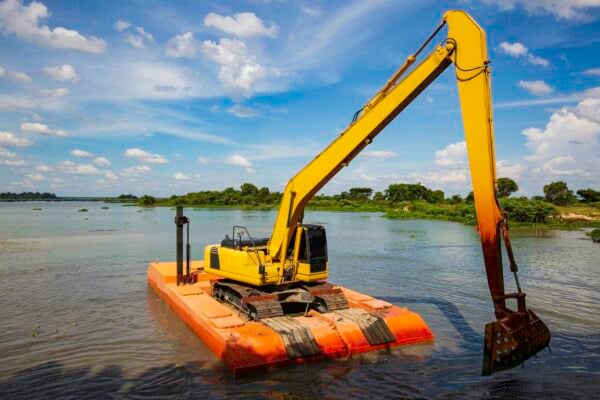Excavators typically have their engine above the counterweight. This is almost always a diesel-powered engine. To burn the fuel, the engine needs to take in air as well as have a way of venting exhaust fumes.
Excavators are commonly used in flood control to remove debris, and for modifying levees and river banks, for dredging, and for dumping fill for land reclamation. They are capable of operating in water as long as the engine can get air. With their heavy weight, they can withstand moderately fast-flowing water without being washed away like a car would be.
When critical items such as final drive motors, slewing motors and other components are exposed to water, it can cause accelerated corrosion, especially if that water is salty. Check and regrease any parts that need it. Complete your circle check once the machine has cooled down.
An operator should not drive through water without being sure that it is safe. You need to learn how to drive an excavator safely before operating in more dangerous conditions such as in flooding. You can use the boom and bucket to test the depth of the water ahead, and to help pull you through (or out) of any difficult situations.
Water should not be allowed to get into the cab otherwise it can interfere with foot controls.
Using a wheeled excavator will provide more ground clearance, but it is more risky in terms of getting stuck if you can’t see what’s below the water. The tracks give more stability and grip in uncertain terrain as there is more of the excavator in contact with the surface below the water.
When driving through water, take it slowly as not to cause a bow wave which can wash over components.
If you are operating in the sea, watch out for incoming tides that can rise above the safe working water level, and for waves that might swamp the excavator. Rinse any salt water off with fresh water once you have finished.
There are specialist excavators used frequently for projects in water, such as off-shore wind farms which have a raised cab and engine, and others which are designed to be completely submerged with power fed to them from the surface and the operator wearing scuba gear.

Long reach excavators can be used on a pontoon for dredging.

Avoid areas of biological significance where possible (e.g. don’t deliberately drive your excavator over a coral reef or areas where rare native birds are nesting on braided rivers and beaches).

